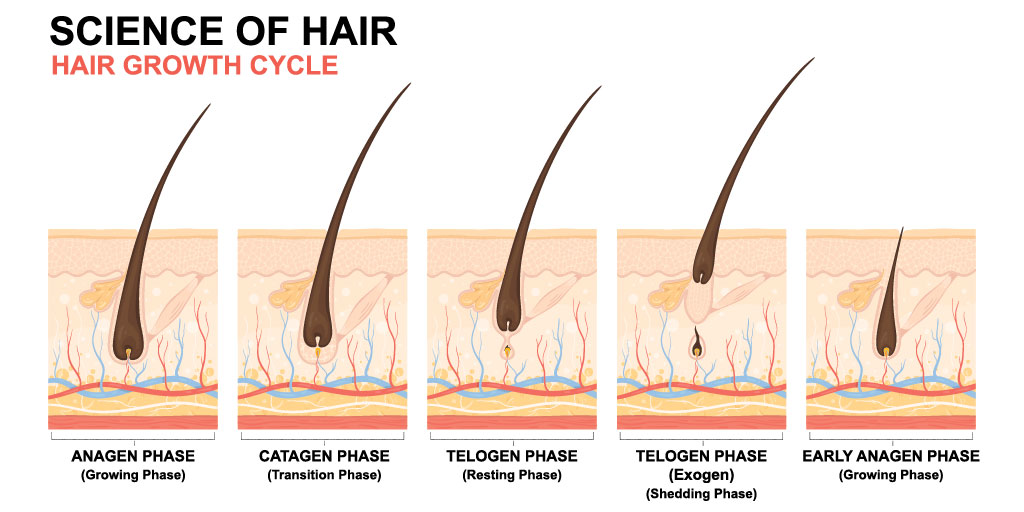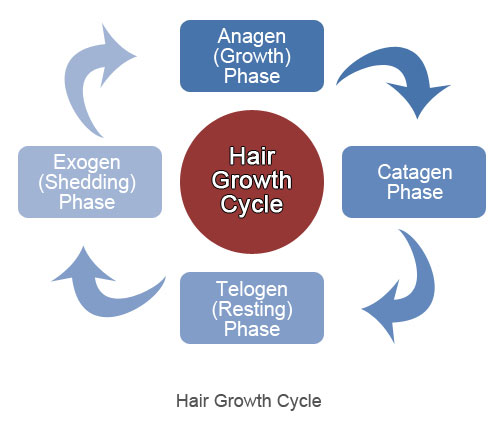The Life Cycle of Hair
Until fairly recently, hair growth was thought to occur in three phases—anagen, catagen, and telogen. Researchers have recently separated out a fourth phase called exogen, and at any one time most of us have hair in all four phases on our bodies and scalp. However, in terms of hair loss the telogen and exogen phases are typically combined and spoken of as the telogen phase. Under non-hair loss conditions, typically 90-95% of all hairs are in the anagen (growth) phase at any given time. During this phase, which lasts from one to seven years for scalp hair, it can grow almost 5 inches per year in whites and Asians.(6)

The next phase, called the catagen phase, is a transitional one and lasts less than a month. At any given time less than 5% of all hairs are in the catagen phase, during which the hair follicle dramatically shrinks and the dermal papilla at its base breaks away from the existing hair. Interestingly, the hair doesn’t fall out or “shed” at this time.(6)

The telogen, or resting, phase lasts about three months waiting for the new hair to develop. The approximately 5-10% of hair in this phase does not grow, but is still attached to the follicle. With the proper molecular signaling at the cellular level the old hair finally enters the exogen phase where it is shed, helped along by the simple mechanics of washing and grooming hair. Through other cell-signaling mechanisms the hair follicle is prompted to enter the growth phase again. Typically people shed about 100 scalp hairs a day in this normal hair cycle.(6)
Genetic studies on scalp biopsies utilizing sophisticated equipment and software programs have revealed that the seemingly simply hair growth cycle is an incredibly complex coordination involving hundreds of genes and proteins. There are even factors that regulate when the genes produce the specific proteins needed for hair cells to perform the multiple growth, energy, and structural maintenance tasks just to survive—all of which are affected by a combination of hormones, age, and health.(16)

